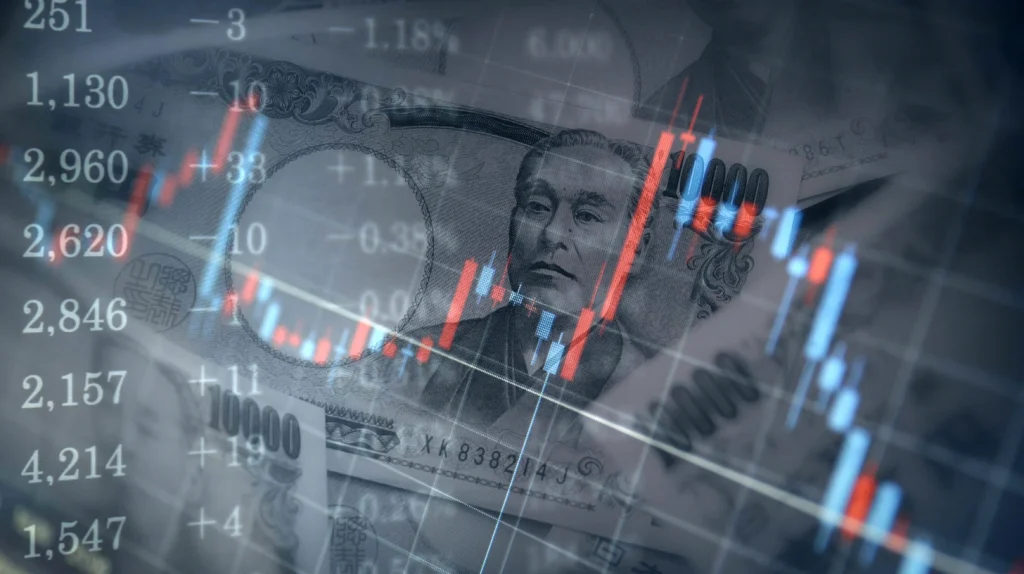Introduction
If you’ve been investing in cryptocurrency, you may have heard the term “maximum supply” thrown around. But what does it mean and what happens when a cryptocurrency reaches its maximum supply?
In simple terms, maximum supply refers to the total number of coins or tokens that will ever exist for a particular cryptocurrency. Once the maximum supply is reached, no new coins or tokens will be created. This concept is a key component of many cryptocurrency systems and has significant implications on the value and stability of the cryptocurrency.
In this section, we will explore the consequences of reaching max supply in cryptocurrency, including the effects on the crypto market, your investments, and the future of digital finance.
Key Takeaways:
- Maximum supply refers to the total number of coins or tokens that will ever exist for a particular cryptocurrency.
- Reaching max supply has significant implications on the value and stability of the cryptocurrency.
- In this section, we will explore the consequences of reaching max supply in cryptocurrency.
Understanding Max Supply in Cryptocurrency
Before diving into the consequences of reaching max supply, it’s important to understand what max supply means in the context of cryptocurrency. Max supply refers to the maximum number of units of a specific cryptocurrency that is available for circulation. Once the max supply is reached, no additional units will be created, and the circulating supply will remain fixed.
The max supply is determined when the cryptocurrency is first created, and it varies from one crypto to another. For example, Bitcoin’s max supply is 21 million, while Ethereum’s is currently uncapped. The significance of max supply lies in its impact on the supply and demand dynamics of the cryptocurrency market.
When a cryptocurrency has a fixed max supply, it creates a sense of scarcity, which in turn affects its value. The more scarce a cryptocurrency is, the higher its demand and the more valuable it becomes. This is because investors and traders perceive a limited supply as a sign of a desirable asset.

Understanding Max Supply in Cryptocurrency Table
| Cryptocurrency | Max Supply |
|---|---|
| Bitcoin | 21 million |
| Ethereum | Uncapped |
| Ripple | 100 billion |
While a fixed max supply can create scarcity and drive up value, an uncapped max supply can lead to inflation and devalue the cryptocurrency. This is because with no limit to the supply, there is no scarcity, and the cryptocurrency becomes less desirable to investors.
Overall, understanding the significance of max supply in cryptocurrency is essential for evaluating the potential value and future prospects of a crypto investment.
The Effects on Price and Value
When a cryptocurrency reaches its maximum issuance, it can have significant implications on its price and value. With a limited supply, the demand for the cryptocurrency can increase as it becomes scarcer. This can lead to a rise in the market value of the cryptocurrency, as investors are willing to pay more to acquire the limited supply.
On the other hand, reaching max supply does not always result in a price increase. Other factors such as market fluctuations, investor sentiments, and technological developments can also impact the price of the cryptocurrency. Furthermore, if the cryptocurrency fails to attract new investors or lose the trust of current holders, it can lead to a decrease in value.
Despite the potential risks and uncertainties, reaching max supply can also offer benefits to investors. With a fixed supply, the cryptocurrency becomes less prone to inflation, which can increase its long-term value. Additionally, it can increase the stability of the cryptocurrency, as the limited supply helps to prevent sudden fluctuations in its price.

In summary, the implications of a cryptocurrency reaching its maximum issuance can have both positive and negative effects on the price and value of the cryptocurrency. It’s important to consider these factors when investing in cryptocurrencies with a limited supply.
Impact on Mining and Validation
Reaching max supply in a cryptocurrency also has implications on the mining and validation process. As the total supply nears its limit, the incentive for miners to continue participating in the network decreases. In a Proof-of-Work system, miners rely on block rewards to earn cryptocurrency for validating transactions and adding them to the blockchain. Once the total number of coins has been mined, block rewards cease to exist, making it less profitable for miners to continue mining.
However, in a Proof-of-Stake system, the validation process works differently, and mining may not be affected in the same way. With Proof-of-Stake, validators must hold a certain amount of the cryptocurrency to validate transactions instead of solving complex equations and using significant amounts of computing power. This means that validators can continue to validate transactions even if the total supply has been reached.
Regardless of the consensus mechanism, reaching max supply can have an impact on the network’s overall security and decentralization. As miners and validators exit the network, the remaining nodes become increasingly centralized, potentially increasing the risk of a 51% attack.

The Future of the Cryptocurrency
When a cryptocurrency reaches its maximum supply, it raises questions about its future. Whether it continues to be traded, used for transactions, or becomes obsolete depends on several factors, including its utility, demand, and network strength.
Take Bitcoin, for example. Bitcoin’s maximum supply is set at 21 million, and as of 2021, around 18.7 million bitcoins have been mined. Once all 21 million bitcoins are mined, no more can be created, making it a scarce asset with limited supply.
Despite reaching its maximum supply, Bitcoin is expected to continue to be traded on exchanges and used for transactions. The cryptocurrency’s intrinsic value, decentralized network, and growing adoption provide confidence in its longevity and sustainability.

“Bitcoin will become progressively more scarce over time and, in that sense, it may be a form of digital gold. As the supply of bitcoin decreases, its value may increase.”
Other cryptocurrencies may not be as fortunate. For those with limited utility or demand, reaching max supply may mark the beginning of their decline. Investors should carefully consider a cryptocurrency’s fundamentals and network strength before investing and be aware of the potential consequences of reaching max supply.
Moreover, reaching max supply can impact the development and innovation within the cryptocurrency ecosystem. Developers may shift their focus toward other cryptocurrencies with more potential for growth, leading to slower innovation and progress in the cryptocurrency space.
Overall, the consequences of a cryptocurrency reaching its maximum supply are complex and depend on various factors. However, understanding the potential implications is crucial for investors to make informed decisions and navigate the ever-evolving landscape of digital currencies.
Investor Considerations
As an investor, it’s important to keep in mind the implications of a cryptocurrency reaching its max supply. While a limited supply can increase the value of a cryptocurrency, it also presents certain risks.
One consideration to take into account is the potential for price volatility as the supply becomes fixed. With no new coins being created, the demand for the cryptocurrency may increase, driving up the price. However, if demand decreases, the price may plummet.
Another factor to consider is the impact on mining rewards. As the number of coins being mined decreases, so do the rewards for miners. This may drive some miners to switch to other cryptocurrencies or abandon mining altogether.
It’s also important to be aware of the potential for scams and fraudulent projects claiming to have a limited supply. Always do your due diligence and research the credibility of a project before investing.
Overall, while a cryptocurrency reaching its max supply can present opportunities for investors, it’s important to carefully consider the risks and do your research before making any investment decisions.

Regulatory and Market Impact
Reaching max supply in a cryptocurrency has significant regulatory and market implications. As the supply becomes fixed, the cryptocurrency may become subject to regulations, especially in jurisdictions where regulators may view limited supply as a potential risk. Such regulations, in turn, can impact the market dynamics and the demand for the cryptocurrency.
Furthermore, as the limited supply creates scarcity, it can drive up the value of the cryptocurrency and attract more investors. However, this increased demand can also lead to volatility and price fluctuations, which may make it challenging for investors to determine the best time to buy or sell.
Additionally, the impact of max supply on the cryptocurrency market can extend beyond the particular cryptocurrency in question. As more cryptocurrencies reach their maximum supply, the market dynamics and regulatory landscape may shift, affecting other cryptocurrencies in the ecosystem.

“The regulatory and market impact of max supply in cryptocurrency can have far-reaching consequences, not just for the individual cryptocurrency, but for the market as a whole.”
Thus, it is crucial to stay informed about the regulatory and market implications of reaching max supply in a cryptocurrency. By closely monitoring these factors, you can make informed decisions about your investments and navigate the evolving landscape of digital finance.
Conclusion
Reaching max supply in a cryptocurrency has far-reaching implications that affect investors, regulators, and the overall market. Understanding the consequences of a cryptocurrency reaching its max supply is crucial for making informed investment decisions and navigating the digital currency landscape. The significance of max supply will undoubtedly play an important role in shaping the future of digital finance as cryptocurrencies continue to evolve.
As an investor, it’s important to consider the potential risks and benefits of investing in cryptocurrencies with a limited supply. You should carefully evaluate the strategies and diversification techniques that best fit your investment goals and risk tolerance.
Regulators also need to be proactive in responding to the impact of reaching max supply in various cryptocurrencies. The market dynamics can shift as the supply becomes fixed, and regulators need to monitor the situation closely to avoid any negative impacts on the market. The implications for other cryptocurrencies in the ecosystem cannot be ignored.
Overall, understanding the effects of reaching max supply in a cryptocurrency is important for anyone interested in digital finance. The future of digital currencies is exciting, but it’s important to stay informed and keep up with the ever-changing landscape.
FAQ
Q: What happens when a cryptocurrency reaches max supply?
A: When a cryptocurrency reaches its maximum supply, no new coins or tokens are minted or created. This means that the total supply of the cryptocurrency is fixed and cannot be increased.
Q: What are the consequences of a cryptocurrency reaching max supply?
A: The consequences of reaching max supply in a cryptocurrency vary. It can impact the price and value of the cryptocurrency, the mining and validation process, and the future development and innovation within the cryptocurrency ecosystem.
Q: How does reaching max supply affect the price and value of a cryptocurrency?
A: Reaching max supply can have significant effects on the price and value of a cryptocurrency. The limited supply can increase demand and scarcity, potentially leading to price appreciation. However, it can also result in decreased utility and demand, leading to price depreciation.
Q: What is the impact of reaching max supply on mining and validation?
A: Reaching max supply in a cryptocurrency can affect the incentives for miners and validators. It may impact the participation of miners in the network and potentially alter the consensus mechanism.
Q: What happens to a cryptocurrency when it reaches max supply?
A: When a cryptocurrency reaches max supply, it typically continues to be traded and used for transactions. However, it may face challenges in terms of continued market demand and innovative developments within the ecosystem.
Q: What should investors consider when a cryptocurrency reaches max supply?
A: Investors should consider the potential risks, benefits, and strategies when investing in cryptocurrencies nearing their max supply. Understanding the implications and market dynamics is crucial for making informed investment decisions.
Q: How does reaching max supply impact regulations and the overall market?
A: Reaching max supply can have regulatory implications and may impact the broader cryptocurrency market. Regulators may respond differently to cryptocurrencies with fixed supplies, and the dynamics of the market can change as supply becomes fixed.
